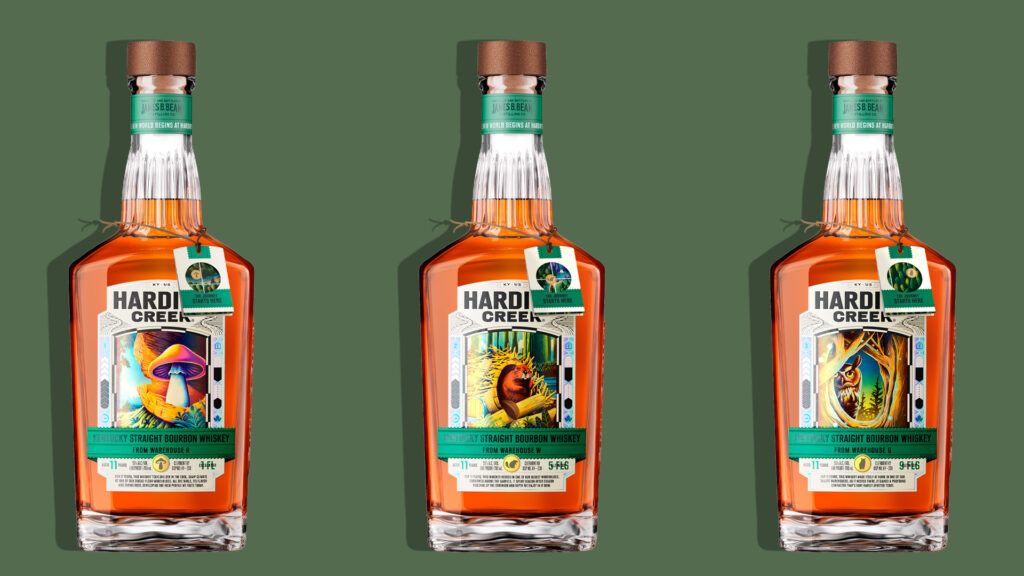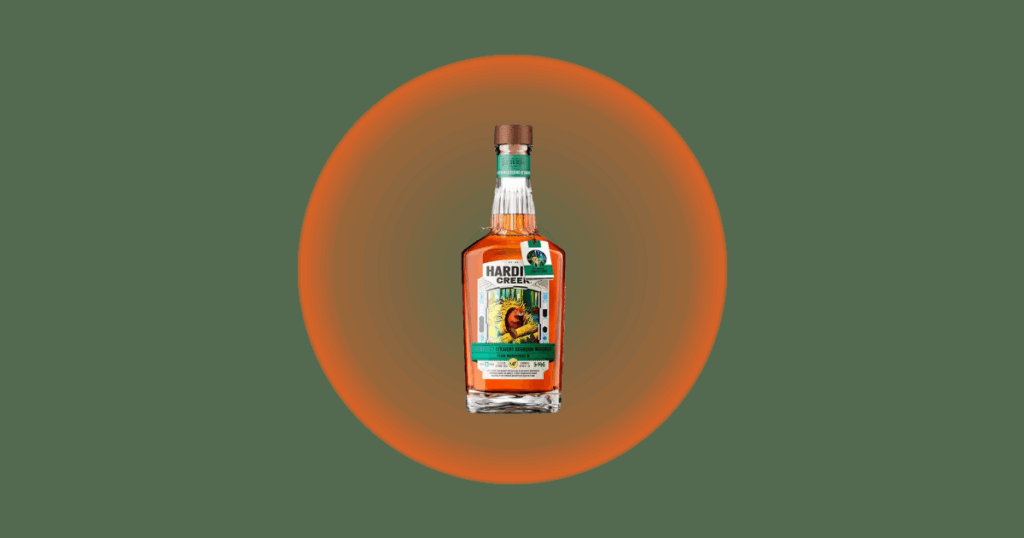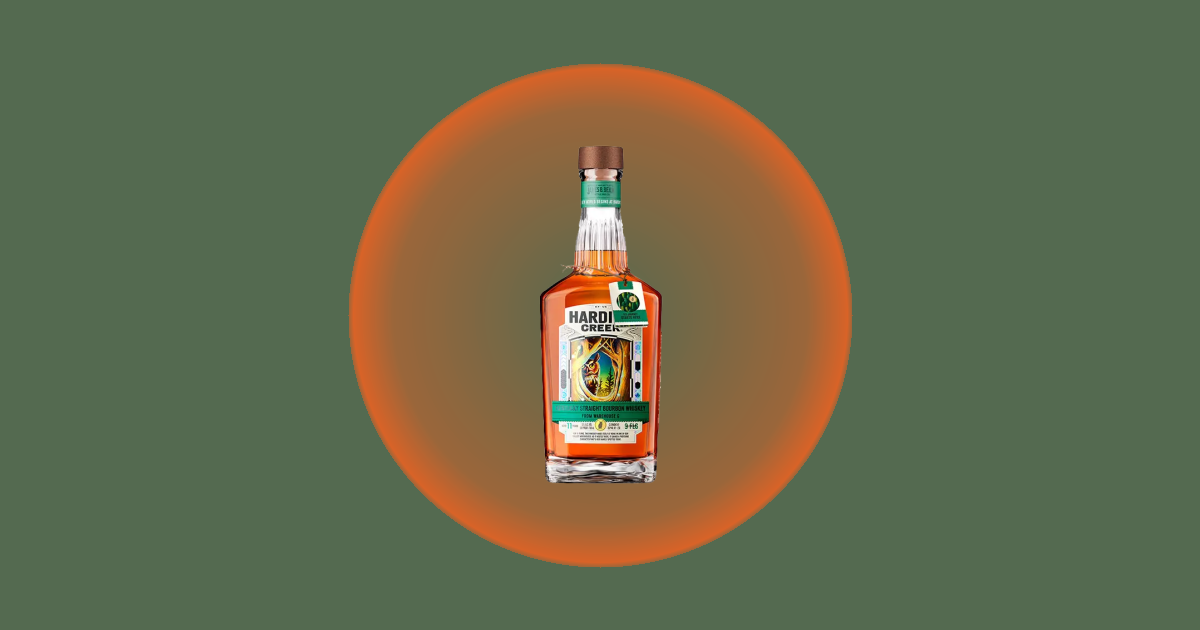Beam Aims to Gamify Whiskey With New Hardin’s Creek Warehouse Series; Does It Work?

When a legacy producer like Beam tries something experimental, the whiskey world pays attention.
With the Hardin’s Creek 2025 “Warehouse Series,” the company is attempting to do more than just release three limited-edition bourbons; it’s trying to build a puzzle. Or a universe. Or, depending on how far consumers are willing to go, a sort of “gamified” whiskey experience built around characters, easter eggs and world-building.
The series comprises three 11-year-old bourbons dubbed Mushroom, Beaver and Owl — the first three “characters” donning Hardin’s Creek labels. From the sound of things when we spoke with Beam, you can expect to meet new “characters” each year.
It’s an ambitious idea and a welcome jolt of creativity from one of the most historically anchored distilling families in America. But it also raises a practical question: Will the people spending $150 per bottle actually care enough to decode a fantasy world? And even if they do, will they be able to taste the differences when the bottles are so scarce?
Still, the ambition matters. And the whiskey is good. That matters, too. As a first step into a more creative direction for Beam, the Warehouse Series shows promise even if we aren’t sure the concept is fully formed.
From Warehouses to World-Building
The Hardin’s Creek project has evolved quickly since its launch in 2022. After early releases exploring age and lineage, the 2023 Kentucky Series dug into terroir, highlighting differences across Beam’s three campuses: Clermont, Frankfort and Boston.
The Warehouse Series narrows the lens even further. Mushroom, Beaver and Owl are very similar expressions: same mashbill, same age, same proof. Much like the 2023 release, the difference comes down to location. The three bourbons were each aged in a different warehouse with varying environments: a rare single-story space with no windows; a damp, creekside five-story rickhouse nearing its 100th birthday; and a soaring nine-story tower that looms above the Clermont campus.
By holding every variable constant except the warehouse, eighth-generation master distiller Freddie Noe wanted to isolate the effect of architecture and microclimate. “The Warehouse Series embodies the spirit of exploration… By holding every variable constant except the warehouse itself, we’re able to demonstrate the unique impact maturation environments have on the spirit,” Noe said in a news release.
But that’s just the technical side. The Warehouse Series is also meant to spark investigation beyond the glass.
Gamifying Whiskey: Does It Work?
Beam partnered with surrealist artist Max Loeffler on the label to build a symbolic identity around each warehouse: Mushroom, Beaver, Owl. Each label contains small clues — numbers, architectural shapes, “power bars,” age icons — that connect to warehouse design and production details.
“We want people to find these little easter eggs,” says Tim Heuisler, global brand ambassador for the James B. Beam Distilling Co. “With each year’s releases… you’ll start picking up on what some of these little Easter eggs are we’ve had on this label.”
Some are more easily interpreted than others. A tiny “C” mark shows that the whiskeys came from the Clermont campus. Others are conceptual; A “power bar” graphic represents proof, an hourglass for age. It’s a playful idea — essentially a bourbon scavenger hunt — and a notable departure for a producer whose brands typically tell straightforward, heritage-driven stories.
Heuisler says the initiative reflects Noe’s push to challenge the Beam team creatively. Influenced by Rick Rubin’s “The Creative Act: A Way of Being,” Noe wants to “zoom in and obsess, zoom out to observe,” Heuisler says, examining whiskey from both granular and conceptual viewpoints.
That attitude extends beyond production. “We hope people latch on to this world, this new kind of fantasy,” Heuisler tells us. What’s what’s coming next? What are all these elements that are moving, shape-shifting in that world of Hardin’s Creek?”
Kevin Sweeney, global PR manager at Beam Suntory, adds that the goal is “a new layer of American whiskey… a little bit more cerebral creative.”
There’s no question that Beam is trying something different. The question is whether the average drinker will want to play along.
The design-forward storytelling is a fun concep5, but is it fully fleshed out? How tight are the conceptual threads connecting characters, architecture and flavor? How will future releases build on this debut? We’re left with some questions. Beam wants discovery, but the structure of the “game” isn’t clearly laid out.
Maybe it will work and be really cool; we’ll have to see consumer reception and what future releases look like. But these are $150 releases with limited allocations, making it hard to collect the set or taste them side by side. Few drinkers will be able to do the comparative work that would truly tie the series together; comparing the symbols on one bottle to another only works if you have multiple bottles. There’s undoubtedly a segment of hardcore bourbon fans who will hunt these down and try to acquire all three, and they’ll be rewarded. But what of the rest of the drinking population?
There’s also the broader question: Do consumers — especially at this price point — want gamification in their whiskey? Perhaps Beam is betting that a younger generation may find the playful mystery appealing. The bet isn’t unreasonable. It will be interesting to monitor the reception.
Why Is Beam Doing This Now?
Heuisler acknowledges that the American whiskey category is in a more uncertain place than it was five years ago. “We’re at a challenging point… You saw that big, massive, massive growth — and now it is here,” he said.
This new series, then, can be viewed from one of two lenses: On one hand, it shows an admirable desire from Noe to push beyond heritage, expand the Beam identity and engage a culture that values design and creativity. On the other, more pessimistic hand, it can be seen as a reflection of a market suggesting that relying on history may no longer be enough.
Beam understands the market. And of course, the Knob Creeks, Booker’s and Basil Haydens of the world aren’t going anywhere. But for a younger brand like Hardin’s Creek, why not explore something new? It will be fascinating to see if the bourbon market is ready for or excited about a brand with a fantasy edge and exploratory ethos.
What Does the Whiskey Taste Like?
Despite the conceptual complexity, the whiskey itself remains the strongest argument for the Warehouse Series. All three are 11-year-old bourbons bottled at 110 proof, but their profiles diverge meaningfully. We had the opportunity to sample all three expressions, and you can find our reviews linked below.
Warehouse R — “The Mushroom”

A sweet, dessert-leaning bourbon that leads with banana bread, rice pudding, and butterscotch on the nose. The palate brings chopped peanuts, molasses, cherry and light ash. The finish is black cherry-driven with warm cinnamon and oak.
Check out our full review here.
Warehouse W — “The Beaver”

The nose on The Beaver is gorgeous: plum, blackberry, sassafras, Cinnamon Toast Crunch, buttered French toast. The palate leans rich and decadent: butterscotch pudding, buttercream, balanced oak, tannin, cherry, a touch of tobacco. This one recalls a great, well-aged Knob Creek; plush, oaky, complex and extremely satisfying.
Check out our full review here.
Warehouse G — “The Owl”

The Owl opens with browned butter, almond pastry, orange zest, maple, raspberry and Beam’s signature nuttiness. The palate is layered with French toast, hazelnut, custard, cherry and bitter tannin.
It’s a near-tie between Owl and Beaver for which is the best of the Hardin’s Creek Warehouse Series, but Owl is the narrow victor for its balance of sweetness, structure and depth.
Check out our full review here.
Overall, these are well-blended, expressive, flavorful bourbons — albeit at a price point that makes it tough, particularly when considering the gamification aspect.
Final Thoughts
The ambition is admirable, the creativity refreshing and the whiskey excellent. But the jury’s still out on how effective this conceptual “game” will be. The concern is it’s too unclear and expensive for most drinkers to participate in meaningfully. The storytelling isn’t cohesive enough for newcomers, and the easter-egg trail may be more atmospheric than actionable.
Still, the Warehouse Series is a promising first chapter. The world-building may sharpen over time; after all, what show ever hits its stride in season 1? The clues may become clearer; future characters may link together in a more defined way. And even if the experiment never becomes a true whiskey “universe,” Hardin’s Creek already delivers on the most important front: putting high-quality bourbon in the bottle.
Follow The Daily Pour:
About The Daily Pour
Founded by Dan Abrams, The Daily Pour is the ultimate drinking guide for the modern consumer, covering spirits, non-alcoholic and hemp beverages. With its unique combination of cross-category coverage and signature rating system that aggregates reviews from trusted critics across the internet, The Daily Pour sets the standard as the leading authority in helping consumers discover, compare and enjoy the best of today's evolving drinks landscape.
